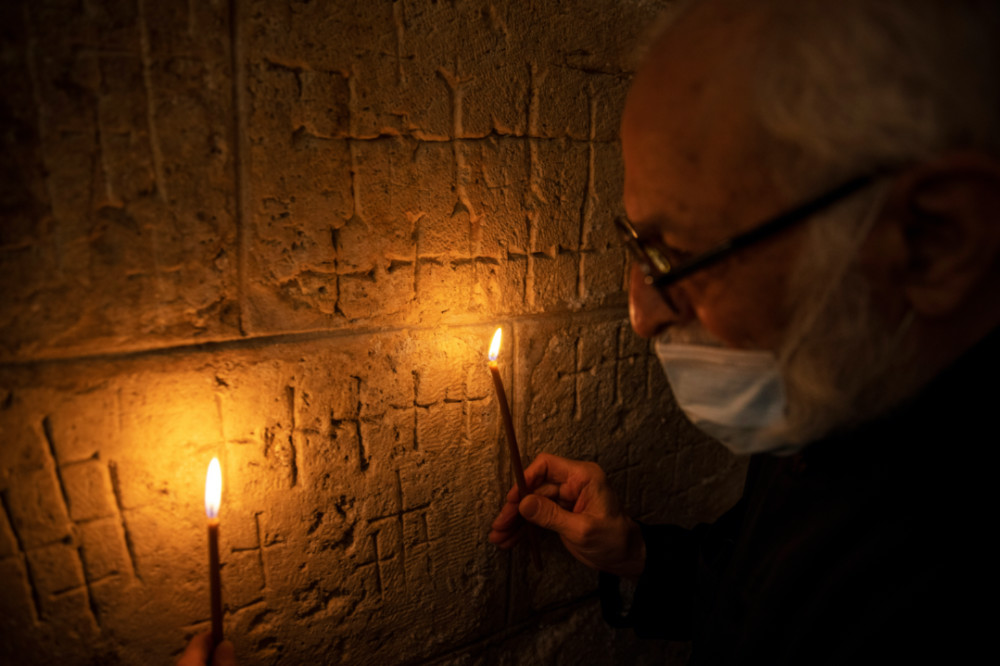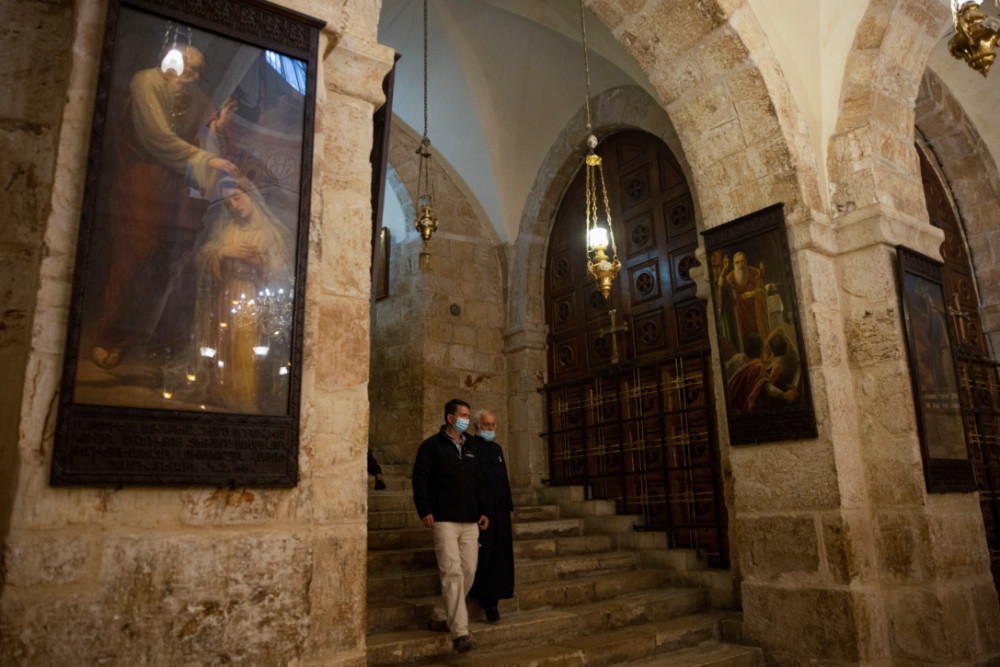Jerusalem, Israel
Reuters
Crosses etched in mysterious abundance across the walls of Christianity’s most sacred church were long assumed to be graffiti, but they may be the work of mediaeval masons paid to carve them by pilgrims, research suggests.
Revered in Christian tradition as the site of Jesus’s crucifixion and burial, Jerusalem’s Church of the Holy Sepulchre usually bustles with worshippers and clergy. That has made study of the sacred markings difficult.

Father Samuel Aghoyan, the Armenian superior at the Church of the Holy Sepulchre holds candles to illuminate crosses etched into the ancient stone wall of the Saint Helena chapel inside the church which is revered in Christian tradition as the site of Jesus’ crucifixion and burial, during his interview with Reuters, in Jerusalem’s Old City on 24th February. PICTURE: Reuters/Ronen Zvulun
But renovations in 2018 at one of its chapels featuring thousands of the close-bunched and hand-engraved crosses gave Israel’s Antiquities Authority and Hadassah Academic College Jerusalem an opportunity for research.
In coordination with the Armenian Orthodox Church, which controls the chapel, the scholars used digital cameras and three-dimensional imaging to map out, compare and date the crosses.
“This unique phenomenon always baffled us: Is it graffiti of the pilgrims, or rather, something else?…” said Amit Re’em, Jerusalem regional archaeologist for the Authority.
“We saw that all of them [crosses] have the same depth and even the marking of the mason,” he said, provisionally dating them to the 15th century.
“Maybe two or three hand artists made these crosses…” Re’em said. “So it’s not graffiti, it’s something more organised.”

Amit Re’em, Jerusalem regional archaeologist for Israel Antiquities Authority and Father Samuel Aghoyan, the Armenian superior at the Church of the Holy Sepulchre, walk in the Saint Helena chapel inside the church during an interview with Reuters, in Jerusalem’s Old City, on 24th February. PICTURE: ReutersRonen Zvulun.
He suggested an intercessionary purpose.
“Let’s say that you are an Armenian pilgrim, so you pay something to the priest, you pay something to this special artist and he carved for you, for the benefit of your soul and your relatives’ souls…a special cross in the most sacred place for Christianity on earth,” Re’em said.
Father Samuel Aghoyan, the Armenian superior at the Holy Sepulchre, saw benefits to the church from the research, especially as it struggles to emerge from COVID-19 lockdowns and prepares for Easter.
“Now there are no pilgrims here, [but] still their spirit is here, we know, I believe in that,” he said.





